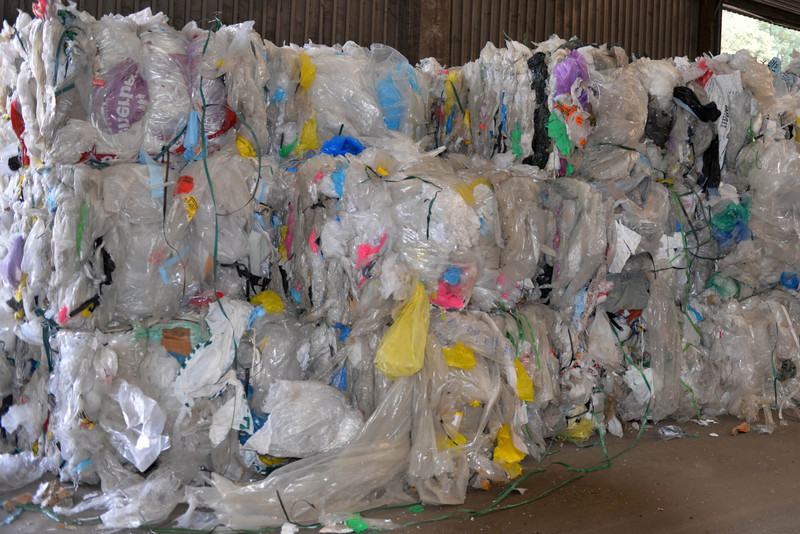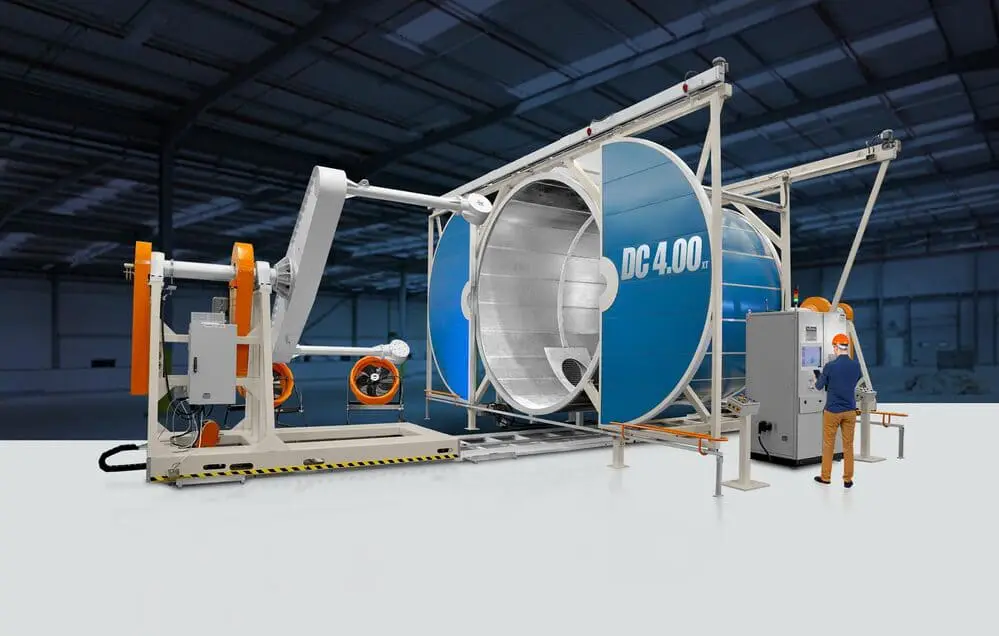
Understanding HDPE Cable Jacketing: A Comprehensive Guide
What is HDPE?
HDPE stands for High-Density Polyethylene, which is a type of thermoplastic polymer made from ethylene. It is known for its high strength-to-density ratio and is commonly used in the production of plastic bottles, corrosion-resistant piping, and cable jacketing. HDPE is characterized by its high tensile strength, resistance to chemicals, and ability to withstand harsh environmental conditions. In the context of cable jacketing, HDPE provides excellent protection for the cables, ensuring durability and longevity.
Importance of Cable Jacketing in the Telecommunications Industry
The telecommunications industry relies heavily on cable jacketing to protect the integrity of communication cables. Cable jacketing serves as the first line of defense, shielding the cables from moisture, mechanical damage, and environmental factors. In the case of HDPE cable jacketing, its high resistance to chemicals, UV light, and moisture makes it particularly valuable in ensuring the reliability and longevity of telecommunications cables. Without proper jacketing, cables are susceptible to damage, which can lead to signal interference, loss of data transmission, and compromised network performance.
Key Properties and Advantages of HDPE for Cable Jacketing
HDPE offers several key properties and advantages that make it an ideal material for cable jacketing. These include high tensile strength, excellent resistance to chemicals and moisture, durability in harsh environments, and UV stabilization for outdoor applications. The rigid and durable nature of HDPE provides robust protection for the cables, ensuring their longevity and reliability in telecommunications infrastructure. Additionally, HDPE’s flexibility and ability to withstand mechanical loads make it a versatile choice for various cable jacketing applications, contributing to the overall resilience and performance of telecommunications networks.
Applications of HDPE Cable Jacketing in Different Environments
High-Density Polyethylene (HDPE) is used as a cable jacketing material due to its high levels of abrasion resistance. It is also used in wire insulation, erosion barriers, and other heavy-duty applications. HDPE exhibits properties such as high hardness, making it suitable for cable jacketing. Zero Polymer HDPE compound, in particular, allows for the retention of the strength properties of HDPE while also providing improved environmental stress crack resistance and ease of use. HDPE and Low-Density Polyethylene (LDPE) are both used as insulation/jacketing materials in the production of custom and stock wire and cable.

HDPE Cable Jacketing Applications
HDPE, or high-density polyethylene, cable jacketing is versatile and can be used in various applications. It possesses unique physical and thermal properties that make it ideal for different environments, such as:
Outdoor environments: HDPE cable jacketing provides excellent resistance to ultraviolet rays and harsh weather conditions, making it an ideal choice for outdoor applications. It is commonly used in the telecommunication and power distribution industries, where cables are exposed to the elements.
Chemical processing plants: HDPE cable jacketing is resistant to various corrosive chemicals such as acids, bases, and solvents. Due to this property, it is often used in chemical processing plants and other highly corrosive environments.
Mining and construction sites: HDPE cable jacketing is durable and has excellent abrasion resistance properties, making it ideal for mining and construction sites. These environments typically involve heavy equipment and harsh conditions that require cables to be able to withstand significant wear and tear.
Marine environments: HDPE is also resistant to water, making it suitable for use in marine environments. Its capacity to resist rust and corrosion caused by saltwater is another reason why HDPE cable jackets can be a useful solution for marine environments.
Indoor environments: HDPE cable jacketing materials are not only suitable for use in outdoor or severe environments. They can be used for indoor cabling requirements and systems-related to lighting, computing, etc.
Manufacturing Process of HDPE Cable Jacketing
The manufacturing process of HDPE cable jacketing involves the extrusion process, where the HDPE material is melted and formed into a continuous profile. This process is crucial in producing durable and high-quality cable jackets. Quality control and standards play a significant role in HDPE cable jacketing manufacturing. These measures ensure the produced jackets meet the required specifications and are safe for use.
Extrusion process for producing HDPE cable jackets
The extrusion process is a widely used technique in various industries, including plastic, food, and pharmaceutical sectors, to produce advanced solutions for increasingly sophisticated demands. This process involves pushing a material through a die to create objects with a fixed cross-sectional profile.
In the case of plastic extrusion, the process begins by filling the hopper with raw plastic, usually in the form of flakes or pellets. The material is then heated and pressurized to force the melt through a die, with a rotating screw’s interaction with the barrel walls generating pressure. The extruded plastic is then cooled and solidified evenly.
HDPE (High-Density Polyethylene) is a commonly used material in this process due to its high production volume.
In summary, the process of HDPE cable jacketing involves the extrusion process, involves the following steps:
Melting: HDPE pellets are melted under specific conditions. The temperature and time of heating are crucial factors that affect the molecular structure of the HDPE, thereby influencing the properties of the final product.
Feeding: The molten HDPE is then fed into a hopper or extruder. The amount of HDPE fed into the extruder depends on the desired thickness of the cable jacketing.
Extrusion: The melted HDPE is forced through a die to form a continuous profile. This profile is then cooled to solidify.
Shaping: The cooled profile is then shaped into the desired form, such as a cable jacket.
Quality Control: The shaped HDPE is then inspected for quality. Any defects or imperfections are corrected before the product is ready for use or further processing.
To manufacture HDPE cable jacketing effectively, follow these steps:
- Determine the desired thickness of the cable jacketing.
- Feed the required amount of HDPE into the extruder.
- Monitor the extrusion process to ensure uniform thickness and no defects.
- Cool and shape the extruded HDPE into a cable jacket.
- Conduct quality control checks to ensure compliance with industry standards.
This process can be carried out using extrusion equipment such as an extruder. It is important to note that the quality of the final product will depend heavily on the quality of the HDPE pellets, the extruder, and the monitoring and control mechanisms in place.
For production-grade results, it may take about 2 weeks. However, this timeline can vary depending on the specific requirements of the project.
Materials and equipment used in HDPE cable jacketing production
High-Density Polyethylene (HDPE) is a commonly used material for cable jacketing due to its excellent mechanical properties and processing benefits. HDPE can be used as either an insulation or jacket material.
Specific HDPE grades, such as HPA 020HD5, are used for Medium/High Voltage power cable jacketing and are often blended with Linear Low-Density Polyethylene (LLDPE) to improve Environmental Stress Crack Resistance (ESCR).
Additionally, sufficient Carbon Black or UV stabilizer should be added to meet cable jacketing specifications. Other materials used for cable jacketing can include nylon, neoprene, ethylene-propylene rubber, and polyurethane.
Quality control and standards in HDPE cable jacketing manufacturing
Quality control is a crucial aspect of HDPE cable jacketing manufacturing, ensuring the final product meets the required standards and specifications. This process involves regular inspection and testing of raw materials, monitoring of the extrusion process parameters, and conducting quality checks on the finished cable jackets.
Adherence to quality control measures and standards allows manufacturers to produce HDPE cable jackets that meet the desired quality and performance criteria.
Quality standards refer to sets of guidelines, systems, methods, requirements, and specifications followed by an organization to ensure consistent process and product quality.
Quality control methods
Various methods can be employed for quality control in manufacturing, including 100% Inspection Method, Six Sigma, X-Bar Chart, Total Quality Management (TQM), Statistical Quality Control (SQC), and the Taguchi Method. These methods involve strategic procedures to ensure proper maintenance and quality testing in production.
Quality control is different from quality assurance. While quality control is reactive and focuses on the product itself, quality assurance is proactive, process-oriented, and aims to prevent defects before they occur.
Quality control roles in manufacturing include Quality Manager, Quality Inspector, and Quality Engineer. These roles are responsible for overseeing the product development processes, inspecting the manufactured products, and ensuring the overall quality of the manufactured product, respectively.
Standards and Inspections
Initial Production Check (IPC) and pre-product inspections are carried out before production begins and up until 20% of production has been completed. These inspections help clarify production requirements and specifications.
In addition, industry standards such as ASTM (American Society for Testing and Materials) and ISO (International Organization for Standardization) provide guidelines for material properties, testing methods, and performance requirements for HDPE cable jacketing. These standards help manufacturers maintain consistency in product quality and ensure that the cable jackets meet the necessary specifications for use in telecommunications infrastructure.
Innovations and advancements in HDPE cable jacketing production
The field of HDPE cable jacketing production has seen several advancements, including the development of high-speed extrusion lines and the use of advanced materials and additives.
For instance, DOW™ DGDK-6862 NT is a HDPE resin that can be used as a cable jacketing material, exhibiting properties such as high hardness, toughness, tensile strength, heat resistance, excellent environmental stress crack resistance, and good processing properties. Rosendahl Nextrom offers high-performance machines for cable insulation and jacketing, equipped with modern functions and fine-tuned to individual process and extrusion lines.
Additionally, the use of flame-retardant additives and low-smoke, zero-halogen compounds can improve the fire resistance of the jackets.
Furthermore, advancements in extrusion technology have led to the development of multi-layered cable jackets, which offer improved mechanical and electrical properties.
These innovations contribute to the development of more reliable and high-performance cables for various industries.
Advantages and Disadvantages of HDPE Cable Jacketing

Properties of HDPE cable jacketing
High-density polyethylene (HDPE) is a resin that can be used as a cable jacketing material. It exhibits properties such as high hardness, toughness, tensile strength, and heat resistance. It also has good flexibility, excellent environmental stress crack resistance, and good processing properties.
HDPE is stiffer and more inflexible than low-density polyethylene (LDPE), giving it better cut-through and abrasion resistance. The jacketing provides protection for the cable from external physical forces and chemical deterioration. It is also used as the first line of moisture, mechanical, flame, and chemical defense for a cable.
Advantages of HDPE Cable Jacketing
HDPE cable jacketing offers superior thermal resistance over PVC due to its elevated melting point, providing thermal stability and conductivity. This material is essential for the serviceability, safety, and durability of structures like cable-stayed bridges, as it is the primary load-bearing structure. HDPE is also the material of choice for numerous telecom and power applications due to its low dielectric loss, high dielectric strength, chemical inertness, and low moisture uptake. Furthermore, it is used in the production of low smoke halogen-free (LSHF) sheaths, which are primarily made from polyethylene and contain very little, if any, chlorine.
Advantages:
High mechanical strength: HDPE cable jacketing provides high mechanical strength, making it suitable for demanding applications.
Exceptional durability: HDPE offers outstanding durability, ensuring long-term protection for cables in various environments.
Corrosion resistance: Its resistance to corrosion ensures the longevity of cables, especially in challenging industrial or coastal environments.
Low friction coefficient: HDPE’s low friction coefficient reduces the risk of cable damage during installation and movement.
Excellent abrasion resistance: HDPE offers high levels of abrasion resistance, making it suitable for applications requiring protection from wear and tear.
Chemical resistance: HDPE cable jacketing exhibits excellent chemical resistance, making it suitable for harsh environmental conditions.
UV resistance: HDPE is resistant to UV radiation, ensuring long-term performance in outdoor applications.
Thermal stability: It exhibits high thermal stability, maintaining its properties across a wide temperature range.
Flexibility: While being robust, HDPE remains flexible, allowing for ease of installation and maintenance.
Ease of installation: The flexibility of HDPE allows for easy installation and maneuvering around obstacles, reducing installation time and effort.
Excellent dielectric properties: It offers superior dielectric properties, making it suitable for insulation in power distribution and telecommunications.
Low smoke emission: Some HDPE materials are designed to emit low levels of smoke in the event of a fire, making them suitable for certain safety-critical applications.
Recyclable: HDPE is recyclable, contributing to cost reduction and environmental sustainability.
These advantages make HDPE a favorable choice for cable jacketing in various industrial and environmental conditions.
Disadvantages:
The general disadvantages of HDPE include high flammability, sensitivity to stress cracking, inability to be biodegradable or composted, and lack of resistance to certain conditions. When compared to PVC, HDPE has a greater wall thickness for the same pressure rating. HDPE is also considered too rigid to be as effective as LDPE in certain applications. Despite these drawbacks, HDPE is lightweight, strong, impact-resistant, and has a long lifespan. However, when comparing failure ratings, PVC has shown to be higher than HDPE.
Common issues with HDPE cable jacketing also include jacket cracking due to an improper bend radius or temperature range, and susceptibility to abrasion, heat damage, oxidation damage, and weather-related damage if the jacket is not suitable for the application. Furthermore, some jacketing material needs to have the right balance of flexibility for ease of use and long-term flex life, and chemical resistance for longevity during exposure to chemicals.
Comparison of HDPE with Other Cable Jacketing Materials
When comparing HDPE with other cable jacketing materials, it is important to consider their key differences and advantages. HDPE, or high-density polyethylene, is known for its excellent resistance to chemicals, abrasion, and impact.
HDPE vs. PVC Cable Jacketing
One common comparison is HDPE vs. PVC cable jacketing. PVC, or polyvinyl chloride, is a popular jacketing material known for its flexibility and cost-effectiveness. However, HDPE offers superior resistance to environmental factors such as UV rays, making it more suitable for outdoor applications.
HDPE vs. LDPE Cable Jacketing
Another comparison is HDPE vs. LDPE cable jacketing. LDPE, or low-density polyethylene, possesses excellent electrical properties and flexibility. However, HDPE surpasses LDPE in terms of durability and ability to withstand harsh environmental conditions. HDPE’s superior abrasion resistance and impact strength make it a preferred choice for cables that undergo significant wear and tear.
HDPE vs. XLPE Cable Jacketing
When comparing HDPE with XLPE cable jacketing, both materials are polymers, but they possess distinct characteristics. XLPE, or cross-linked polyethylene, offers excellent electrical properties, high temperature resistance, and better dimensional stability. On the other hand, HDPE provides outstanding chemical resistance and impact strength. The choice between HDPE and XLPE depends on the specific requirements of the application, such as the need for chemical resistance or temperature tolerance.
Environmental Impact and Sustainability of HDPE Cable Jacketing
HDPE is widely used in various industries due to its beneficial properties, including in the production of cable jacketing. However, the environmental impact of these cable products should be a key consideration for project managers and specifiers.

Microplastics
Microplastics, which can originate from various plastic materials including HDPE, have become a major environmental issue, particularly in soils and groundwater. Furthermore, the life-cycle environmental impacts of HDPE and other materials used in cable formulations have not yet been fully determined.
Emissions and pollution from HDPE cable jacketing production
In recent years, energy-efficient and environmentally friendly manufacturing processes are prioritized to reduce carbon emissions and ensure maximum recycling and harmless waste disposal. The adoption of low- or zero-halogen HDPE resins in jacketing for new and replacement electrical and telecable installations has been noted, which could potentially reduce harmful emissions.
The recycling or disposal of used cable at the end of its life also contributes to environmental impact. A study was organized to measure emissions produced during polyethylene processing.
Lastly, the low rate of recycling and reuse of HDPE, one of the most produced and used plastics, presents an environmental challenge.
Recyclability and sustainability of HDPE cable jacketing
The recyclability and sustainability of HDPE cable jacketing are being explored by various companies and researchers. Borealis, for instance, has made significant progress towards ensuring that by 2025, all of its consumer products are either recyclable, reusable, or compostable. They have also developed a more sustainable jacketing innovation using their proprietary “Borcycle M” technology, which transforms plastic waste streams into value.
Similarly, other companies are transforming recycled plastic into cable insulation and jacketing materials, reducing the need for virgin plastics. However, the recycling of electric cables often focuses on the recovery of metals, while polymer insulation is often considered waste.
Despite these efforts, the recycling of HDPE cable jackets separately to obtain high-quality recycles remains a challenge.
Choosing the Right HDPE Cable Jacketing for Your Needs
At Zero Polymer Trading Group, we value our client’s requirements. We take pride in our top-quality product – Black HDPE compound (Code: ZP1110-02), designed for the jacketing of power cables and insulation of optical fibers. This unique product demonstrates our dedication to delivering durability, quality, and assurance in every product we deliver.

So, feel free to explore the complete specs and details of our product.
Should you have any inquiries, please do not hesitate to contact us, and we will respond promptly.



Whoa! This blog looks exactly like mmy old one! It’s on a entirely different subject but it has pretty much the same page layout aand design. Great choice off
colors! https://www.Waste-ndc.pro/community/profile/tressa79906983/
Thank you for your interest in our website. I appreciate your compliment. I would like to see your website as well.
Hi there, I would like to subscribe for this blog to get most recent updates, therefore where can i do it please assist.
Hello! I’ve added your email to our subscription list. You’ll receive the ongoing updates soon. We’re also launching a newsletter soon, so you won’t miss a thing.
I blog often and I truly thank you for your information. This article has really peaked my interest. I’m going to book mark your blog and keep checking out for new information about once per week. I subscribed to your Feed too.
Also visit my blog post … http://forum.soundspeed.ru/member.php?627110-Leoniqr